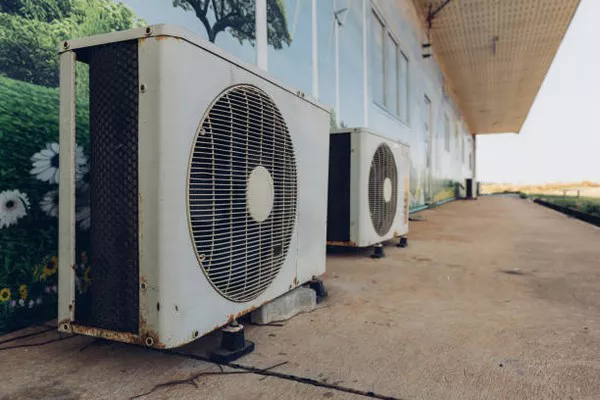Ammonia refrigeration systems have been a cornerstone of industrial cooling applications for decades due to their efficiency, cost-effectiveness, and environmentally friendly nature. These systems play a crucial role in preserving perishable goods, maintaining optimal conditions in various industrial processes, and providing comfort cooling in large-scale facilities. In this article, we will delve into the intricacies of how ammonia refrigeration systems work, exploring their components, thermodynamic cycle, and safety considerations.
The Components of an Ammonia Refrigeration System
An ammonia refrigeration system consists of several key components that work in tandem to facilitate the cooling process. These components include the compressor, condenser, evaporator, and expansion valve.
1. Compressor:
The compressor is the heart of the refrigeration system. It is responsible for drawing in low-pressure, low-temperature ammonia vapor from the evaporator and compressing it into high-pressure, high-temperature gas. This increase in pressure and temperature is vital for facilitating heat exchange in the subsequent stages of the refrigeration cycle.
2. Condenser:
The high-pressure, high-temperature ammonia gas then flows into the condenser, where it releases heat to the surrounding environment and undergoes condensation. As a result, the gas transforms into a high-pressure liquid. The condenser is typically designed as a coil or a series of tubes to maximize the surface area available for heat exchange.
3. Expansion Valve:
From the condenser, the high-pressure liquid ammonia passes through the expansion valve. This valve acts as a restriction point, causing a sudden drop in pressure and temperature. As a consequence, the liquid ammonia undergoes a phase change, partially vaporizing into low-pressure, low-temperature ammonia gas and liquid mixture.
4. Evaporator:
The low-pressure, low-temperature mixture now enters the evaporator, which is the component responsible for absorbing heat from the surrounding environment. This heat absorption causes the remaining liquid ammonia to evaporate, transforming into a low-pressure vapor. As the ammonia vaporizes, it draws heat from its surroundings, effectively cooling the desired space or substance.
The Thermodynamic Cycle: How Ammonia Refrigeration Works
The operation of an ammonia refrigeration system is governed by the fundamental principles of thermodynamics, specifically the vapor compression refrigeration cycle. This cycle involves four main stages: compression, condensation, expansion, and evaporation.
1. Compression:
The refrigeration cycle begins with the compressor drawing in low-pressure, low-temperature ammonia vapor from the evaporator. The compressor then compresses this vapor, increasing its pressure and temperature. This stage requires energy input, often provided by an electric motor connected to the compressor.
2. Condensation:
The high-pressure, high-temperature ammonia gas exits the compressor and enters the condenser. Here, the gas releases heat to the surrounding environment, causing it to condense into a high-pressure liquid. This heat removal results in a temperature drop.
3. Expansion:
The high-pressure liquid ammonia passes through the expansion valve, where its pressure is rapidly reduced. As a consequence, the liquid partially vaporizes, leading to a significant drop in temperature due to the expansion process.
4. Evaporation:
The low-pressure, low-temperature mixture enters the evaporator, absorbing heat from its surroundings. The remaining liquid ammonia evaporates, transforming into a low-pressure vapor. This vaporization process cools the environment within the evaporator’s vicinity.
Safety Considerations and Environmental Impact
While ammonia refrigeration systems offer numerous benefits, it’s essential to address safety considerations associated with their use. Ammonia is a toxic and flammable gas that requires careful handling and proper safety measures. Leakage of ammonia gas can pose serious health hazards to personnel working in the facility, necessitating the implementation of robust ventilation systems, leak detection systems, and emergency protocols.
Additionally, ammonia is known for its environmentally friendly characteristics, as it has negligible ozone depletion potential (ODP) and a low global warming potential (GWP) when compared to some traditional refrigerants. This attribute has contributed to the resurgence of interest in ammonia refrigeration systems as an eco-friendly alternative in various industries, aligning with global efforts to mitigate climate change.
Applications and Advantages
Ammonia refrigeration systems find applications across a wide range of industries, including food processing, cold storage facilities, chemical manufacturing, and HVAC systems for large commercial and industrial spaces. Their advantages lie in their high energy efficiency, cost-effectiveness over the long term, and environmental friendliness.
The exceptional thermodynamic properties of ammonia, such as its high latent heat of vaporization, make it particularly efficient at heat transfer, resulting in faster cooling cycles and reduced energy consumption. Furthermore, its compatibility with existing equipment and the ability to recover waste heat for other purposes enhance its overall efficiency.
Conclusion
Ammonia refrigeration systems stand as a testament to the marriage of science and engineering, providing efficient and sustainable cooling solutions across various industries. By harnessing the principles of thermodynamics, these systems effectively remove heat from spaces and substances, preserving goods, enhancing industrial processes, and ensuring comfortable environments. As advancements in technology and safety measures continue, ammonia refrigeration systems are poised to maintain their relevance as a reliable and environmentally conscious choice for cooling needs in the years to come.

